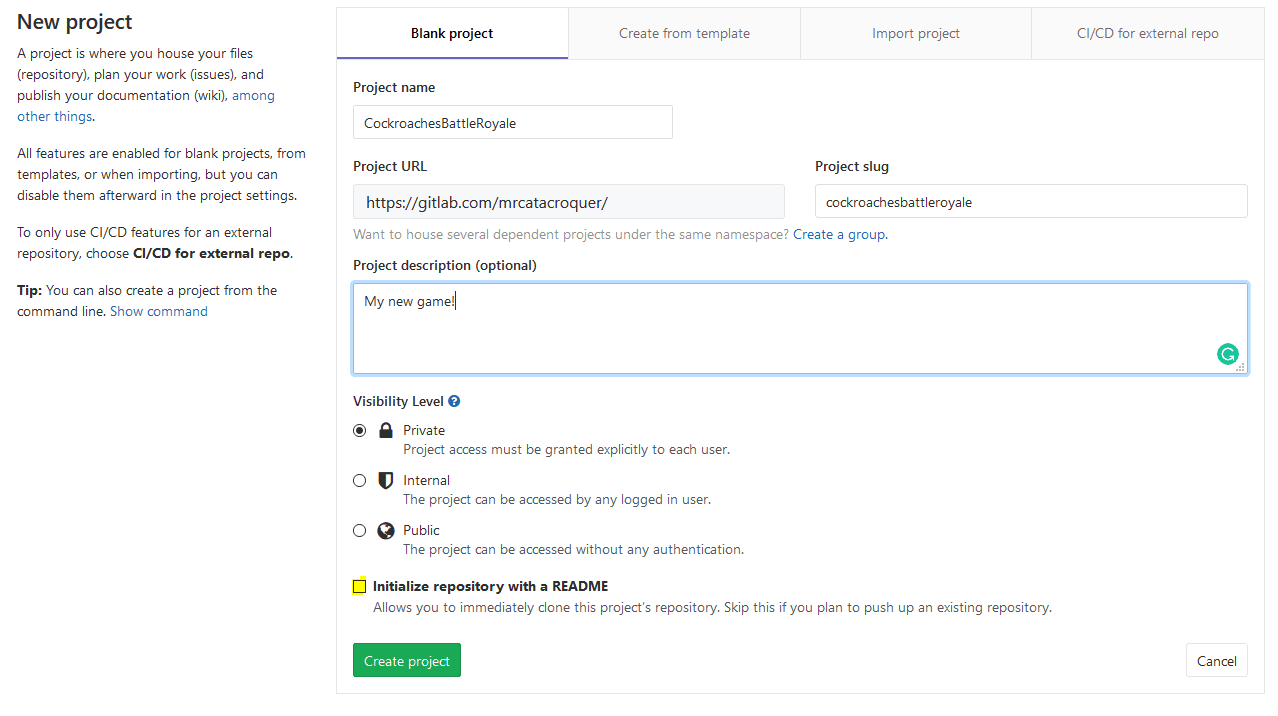

I disabled pages (deploy WebGL build as GitLab page), build-ios-xcode, build-and-deploy-ios, build-android, deploy-android, build-StandaloneLinu圆4-il2cpp, build-StandaloneOSXUniversal.
UNITY CLOUD BUILD GITLAB MANUAL
Disable the targets you don’t need, either by deleting or commenting them out, or you can add a new property when: manual so they don’t trigger automatically.I left it at image: gableroux/unit圓d:2019.3.7f1 as that was the version I was on. Edit the image: field at the top to set the unity version you want.Change BUILD_NAME to something sensible.gitlab-ci.yml and make the modifications you need. Assets/Scripts/Editor/BuildCommand.cs (needs to be at this particular path in your repo too).Clone and copy these files over to your project.Without further ado, here are the steps: Building and testing with GitLab Add configuration files to your repo This is why I decided to write this guide, so you (and future me) don’t have to search all over the place, when all you want to do is quickly automate deployment for a new jam game. Also I was unfamiliar with GitLab CI, which meant I had to look up a lot of things along the way. and some info was in the example readme and some in gitlab issues and some in the gitlab docker image readme. some steps are in the output log of a docker container etc. While the official documentation for setting up was good enough, I found it a bit scattered (i.e. I wanted to do it the most official way to minimize the amount of corner-cases and workaround I would run into, so I went with gitlab-ci, which means you should host your repo on or another GitLab instance. There seems to be two common ways to set it up, either using gitlab-ci, which is what the official example does, or using Travis and GitHub as explained by Carlos Castro on his blog. After a quick search it seemed pretty clear that /gableroux/unit圓d was the most well-maintained and popular solution. I decided to go for a docker-based solution, and started looking for images.

Also I haven’t checked if it would integrate well with Itch.
UNITY CLOUD BUILD GITLAB HOW TO
In this post, I’ll explain how to set up continuous deployment so all of this will be done automatically when you push to your git master branch.Īt first glance, it seemed like Unity Cloud build would be the obvious solution… However it costs $9 a month, and I only do this as a hobby and I don’t like depending paid services if I don’t have to. When doing game jams, you can easily waste a lot of time fixing one bug, manually build for four or more platforms, upload each to itch only to find there is another critical bug and you have to start all over again. I will show you how to build pipelines with Gitlab CI.Automatically building and deploying Unity applications to itch.io

What I will try is to explain to you the basics and offer you enough practice opportunities so that you can apply what you learn easily in your own projects as well. You need to understand the tools you use and how GitLab can support your needs. Learning to build pipelines is a try-and-error process that can be very frustrating. It simply does not make sense to promise something like that. Becoming an expert in any tool comes with time and hard work. This course will NOT make you a GitLab CI / DevOps expertĪ lot of courses promise you will become an expert. learn how to deploy a Java application to AWS, using AWS S3 and AWS Elastic Beanstalk. learn the CI/CD practice by deploying a simple website have an overview of the Gitlab architecture You will learn the basics of CI/CD and start building pipelines right from the first lecture. This course will teach you how to use Gitlab CI for your own projects. This course is neither endorsed by, nor in partnership, nor affiliated with GitLab, Inc.


 0 kommentar(er)
0 kommentar(er)
